PA Master Naturalist’s Notebook: Oct. 5 – Oct. 26, 2024
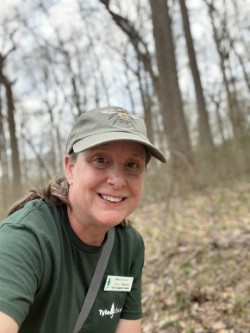
As the Program and Tour Coordinator at Tyler Arboretum, every week I look forward to preparing my weekly report for our volunteer educators.
I draw upon my training as a PA Master Naturalist to highlight the plants, insects, animals and other natural phenomena I’ve recently observed on Tyler’s grounds. I include photos (and some videos) along with educational tidbits our volunteers can share with our visitors.
My colleagues have encouraged me to compile my reports into an occasional blog for you. I’d love to hear from you about your observations too! Please email me anytime at tmallon@tylerarboretum.org.
October brought a continuation of warm, dry days. Fall-blooming flowers appeared in the fields, meadows and gardens followed by a wide variety of pollinators and other insects. Fall color has peaked, but the trees continue to put on a show. As much as I’ve been enjoying the sunshine, I am still hoping for rain.
Report: Week of October 26, 2024
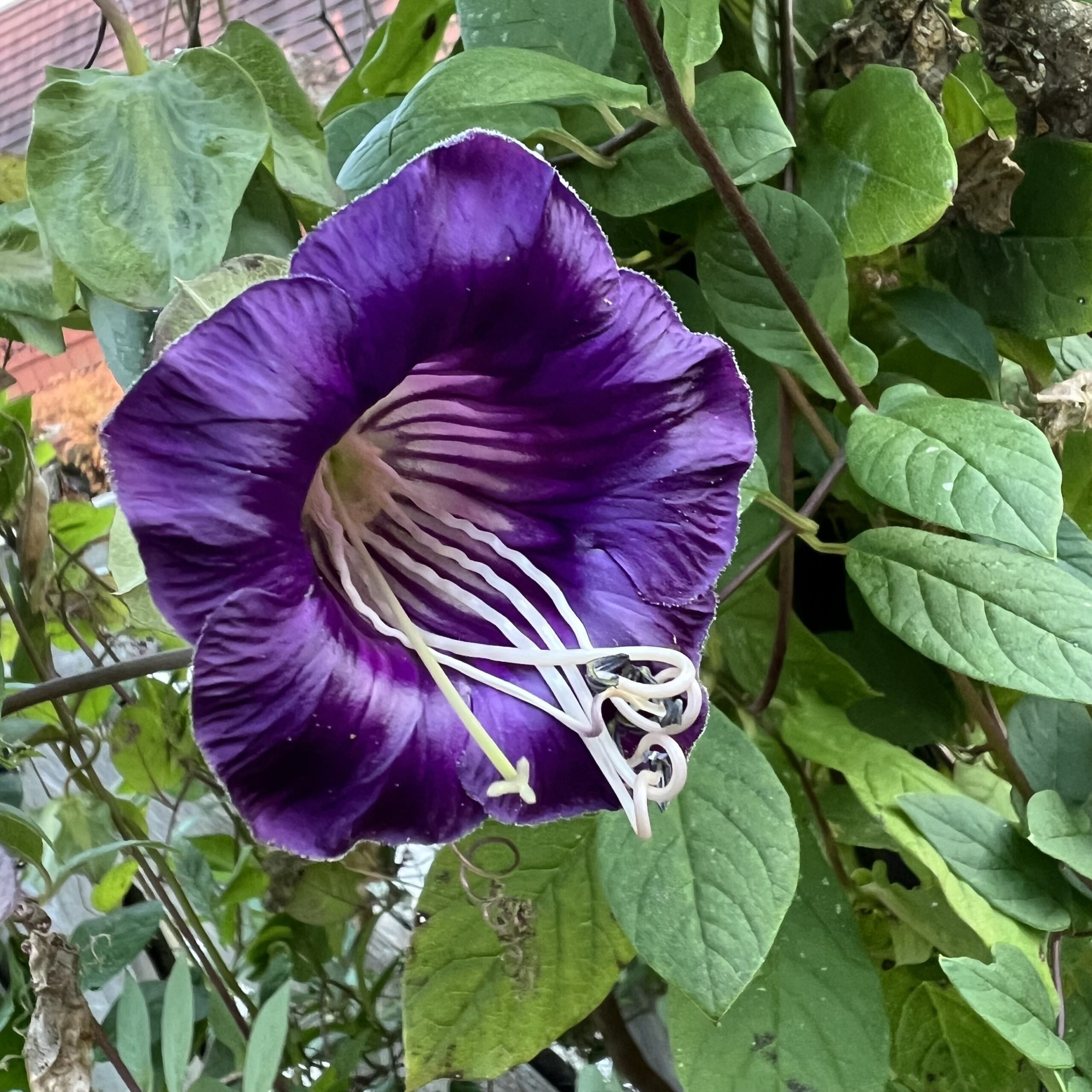
Cup and saucer vine (Cobaea scandens)
Look inside the flowers for insects!
Location: Lucille’s Garden.

Cocoon found in leaf litter
Many insects overwinter in fallen leaves, either as adults, larva or in cocoons.
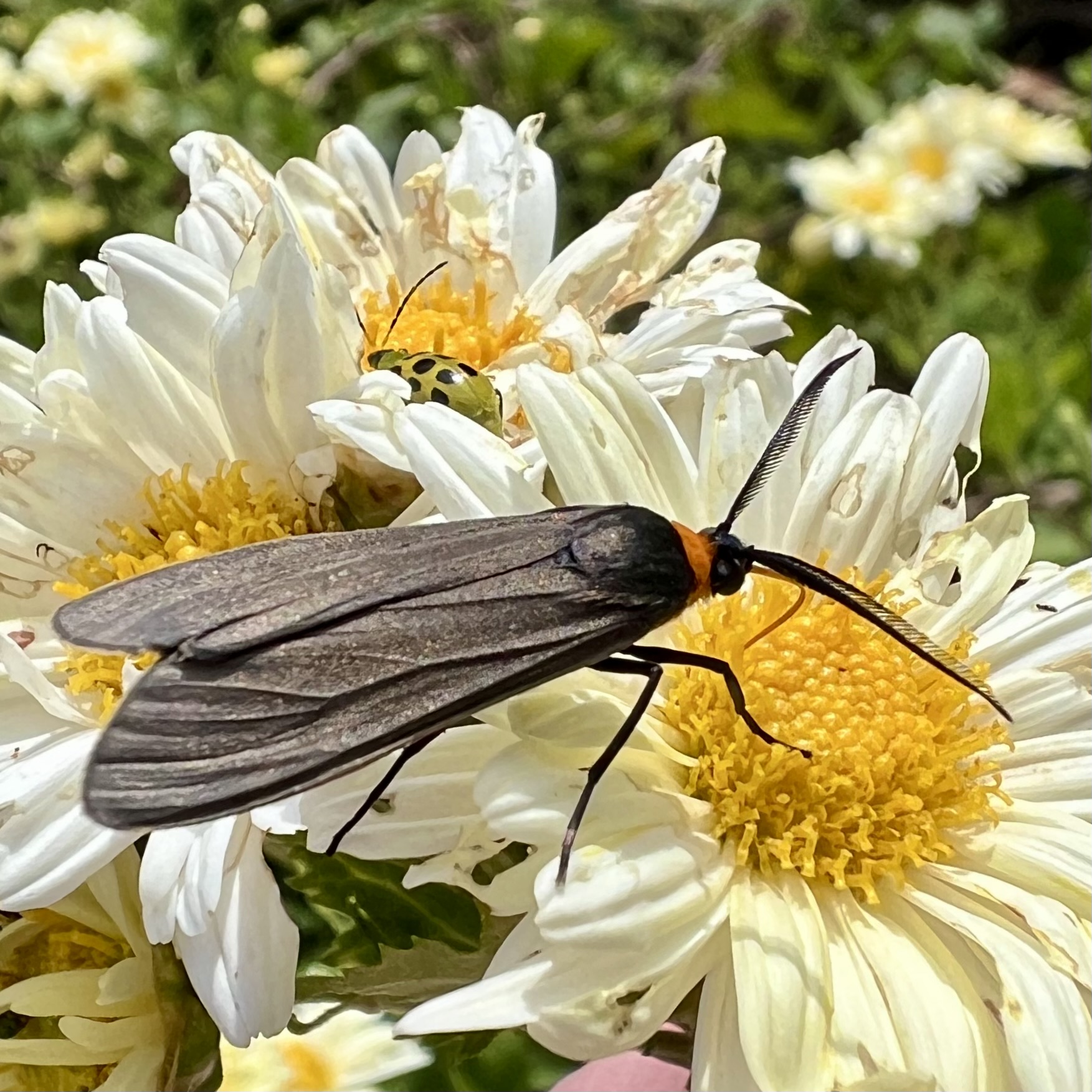
Yellow-collared scape moth (Cisseps fulvicollis)
Spotlight: Ambush and Assassin Bugs
Ambush and assassin bugs have piercing sucking mouth parts that are commonly referred to as a beak. They feed by stabbing prey with their beak, injecting enzymes that dissolve the victim’s tissues and then sucking out the fluids.
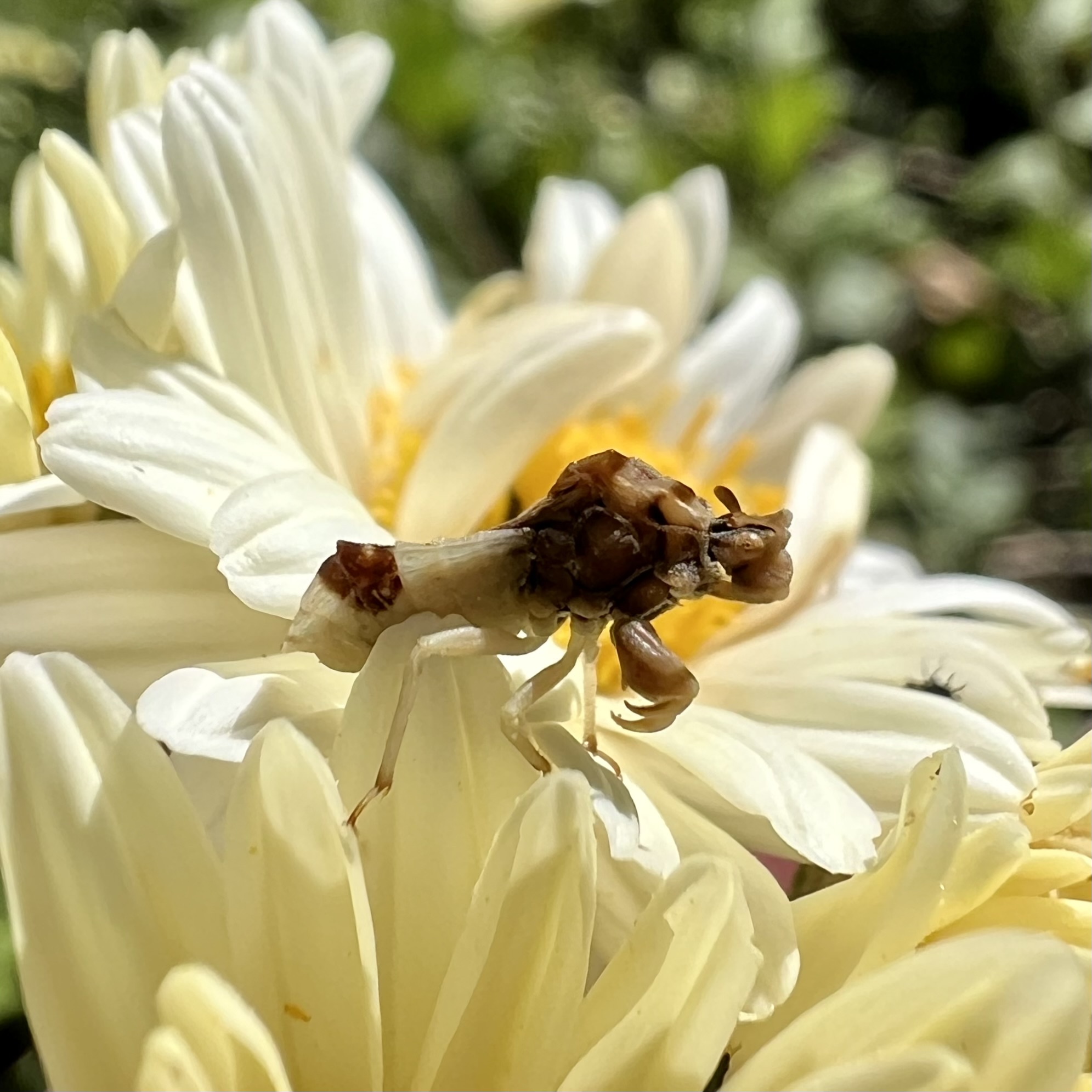
Jagged ambush bug (Phymata fasciata)
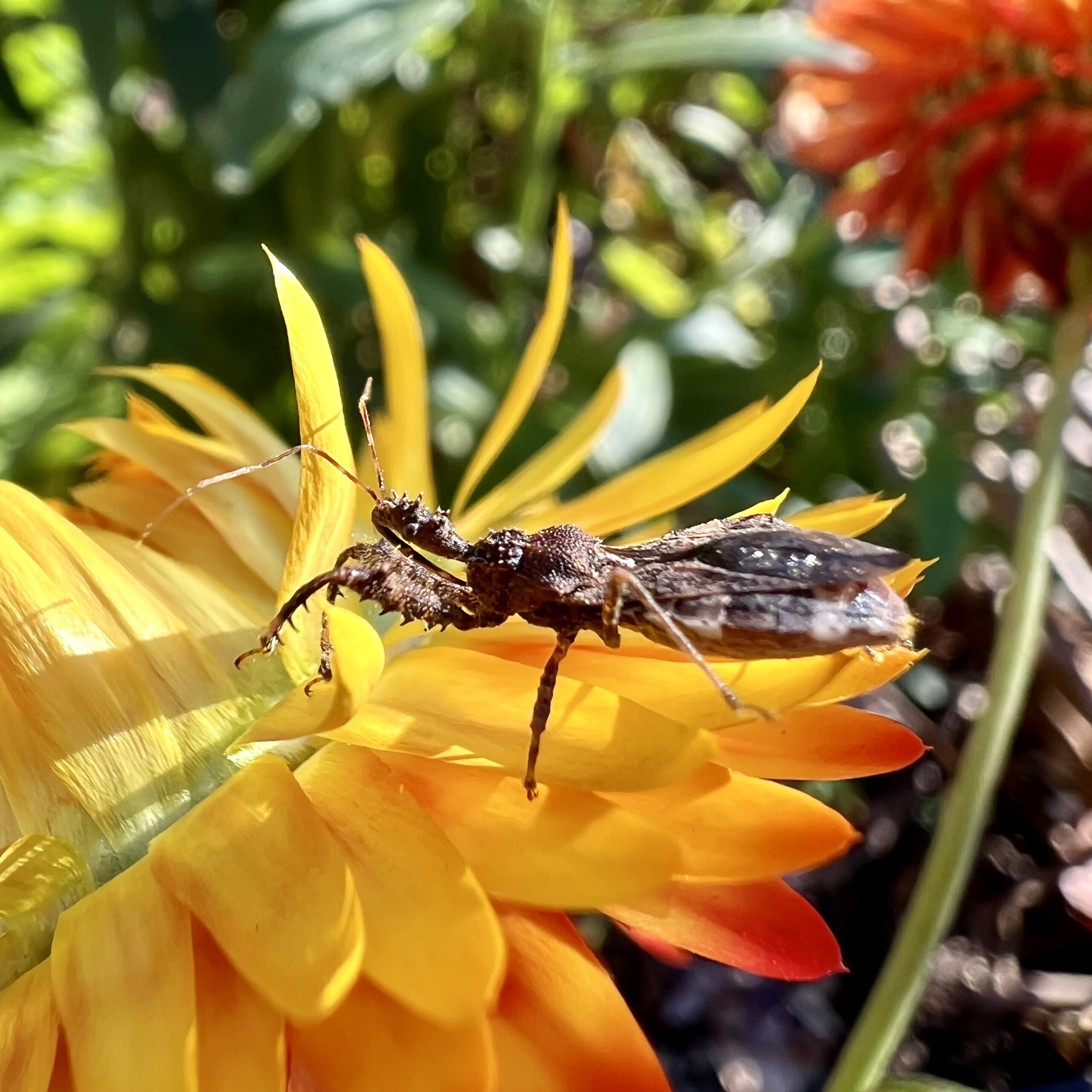
Best educated guess: Spiny assassin bug (Sinea spinipes)
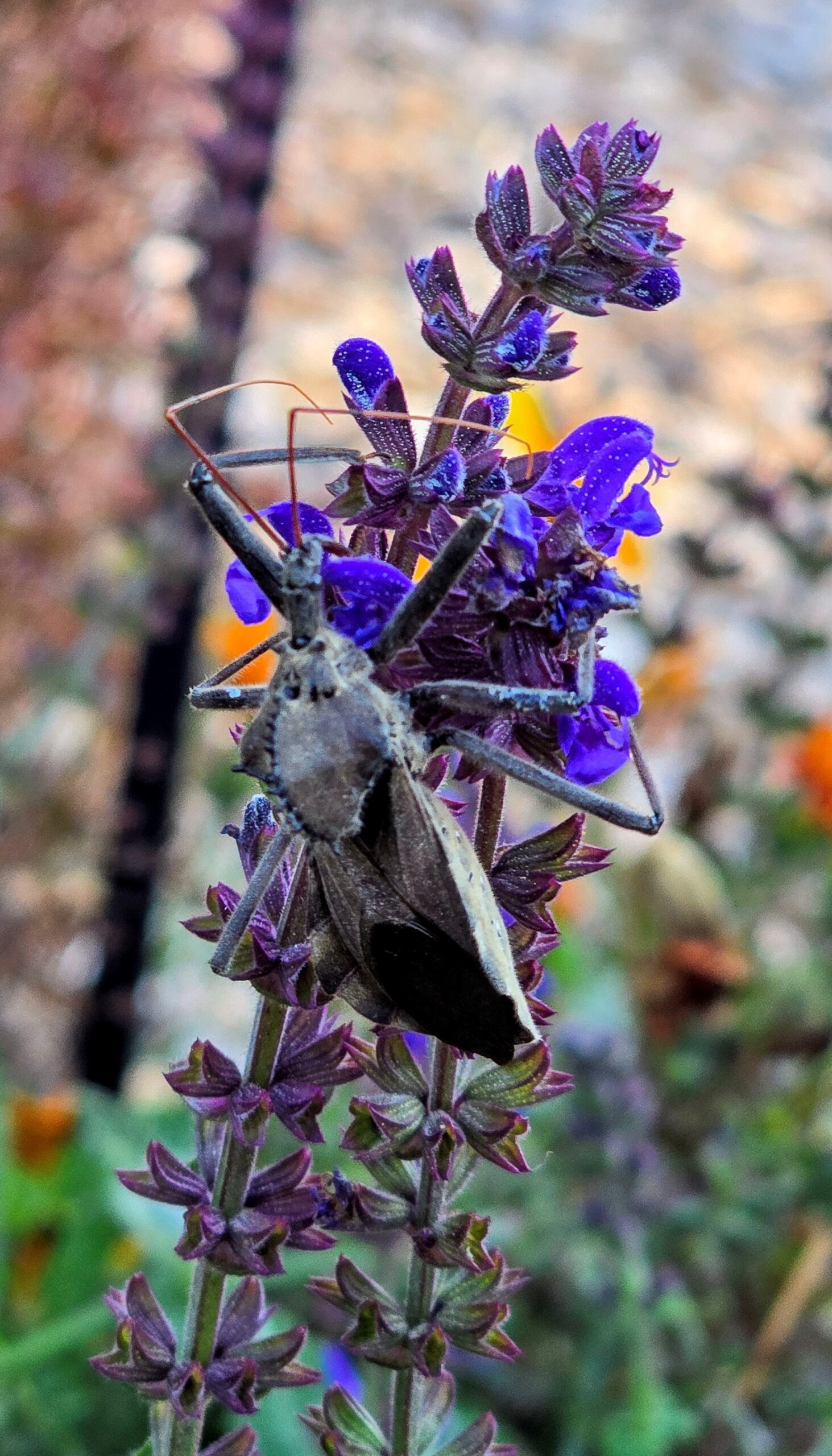
Wheel bug (Arilus cristatus)
Image courtesy of Donna Hopkins
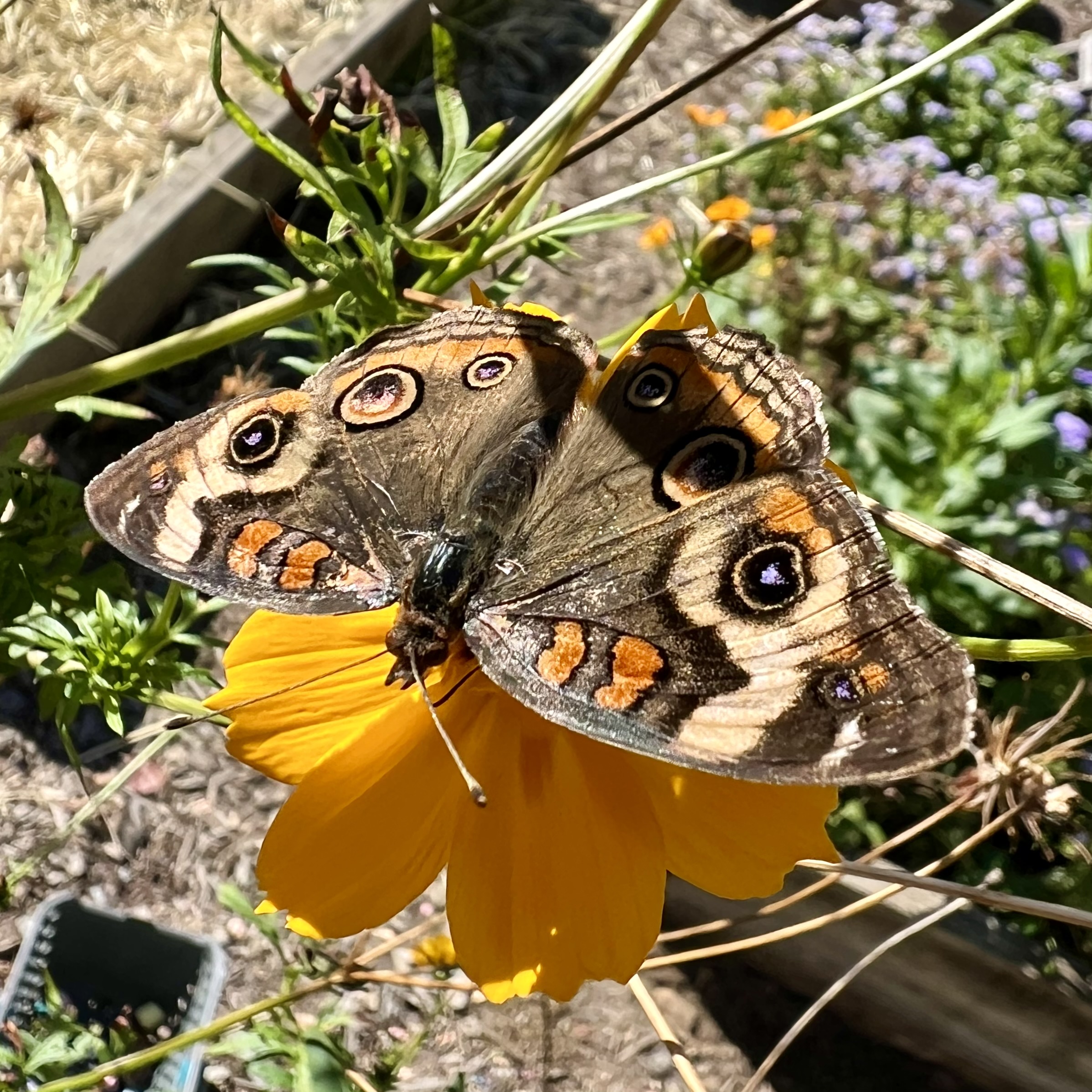
Common buckeye butterfly (Junonia coenia)
The butterfly that started it all. I was probably 9 years old the first time I saw a common buckeye. Sitting high in the branches of my neighbor’s crabapple tree, I watched in awe as it rested on a nearby branch. I was mesmerized by the perfect symmetry of its wings and thought about it for months afterward. I can still recall the feelings of awe and wonder and I felt that day. It is often this hope of discovery that compels me to head outdoors to tread lightly and look closely at the world around me.
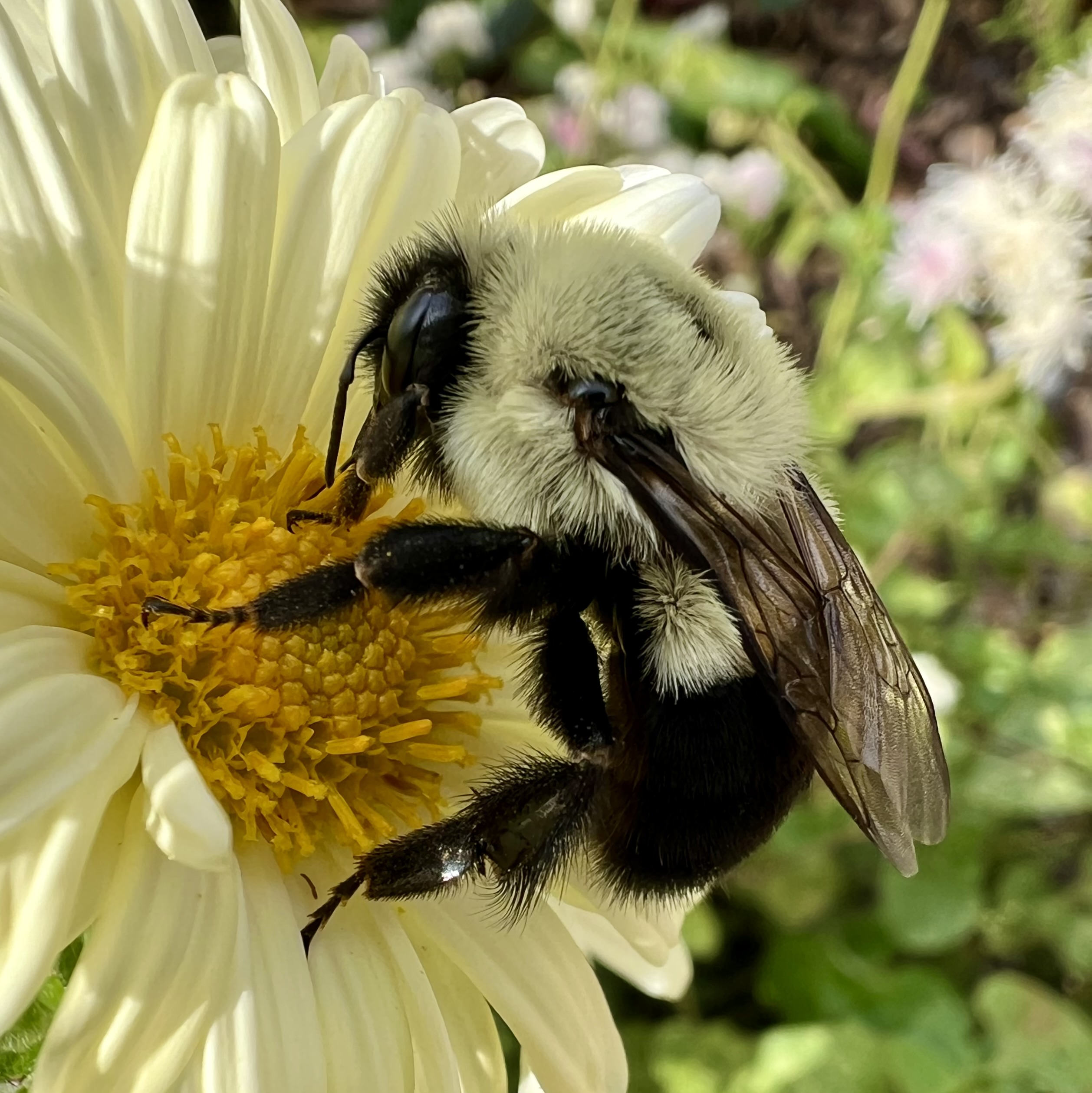
Common eastern bumblebee, queen (Bombus impatiens)
Queen eastern bumblebees can be identified by their large size. During their brief active period in the fall, queens build up fat reserves and search for a suitable place to overwinter. Once a site is found, the queen burrows into the ground to hibernate. In the spring, she emerges to search for a nesting site, where she will establish a new colony.
Report: Week of Oct. 19, 2024
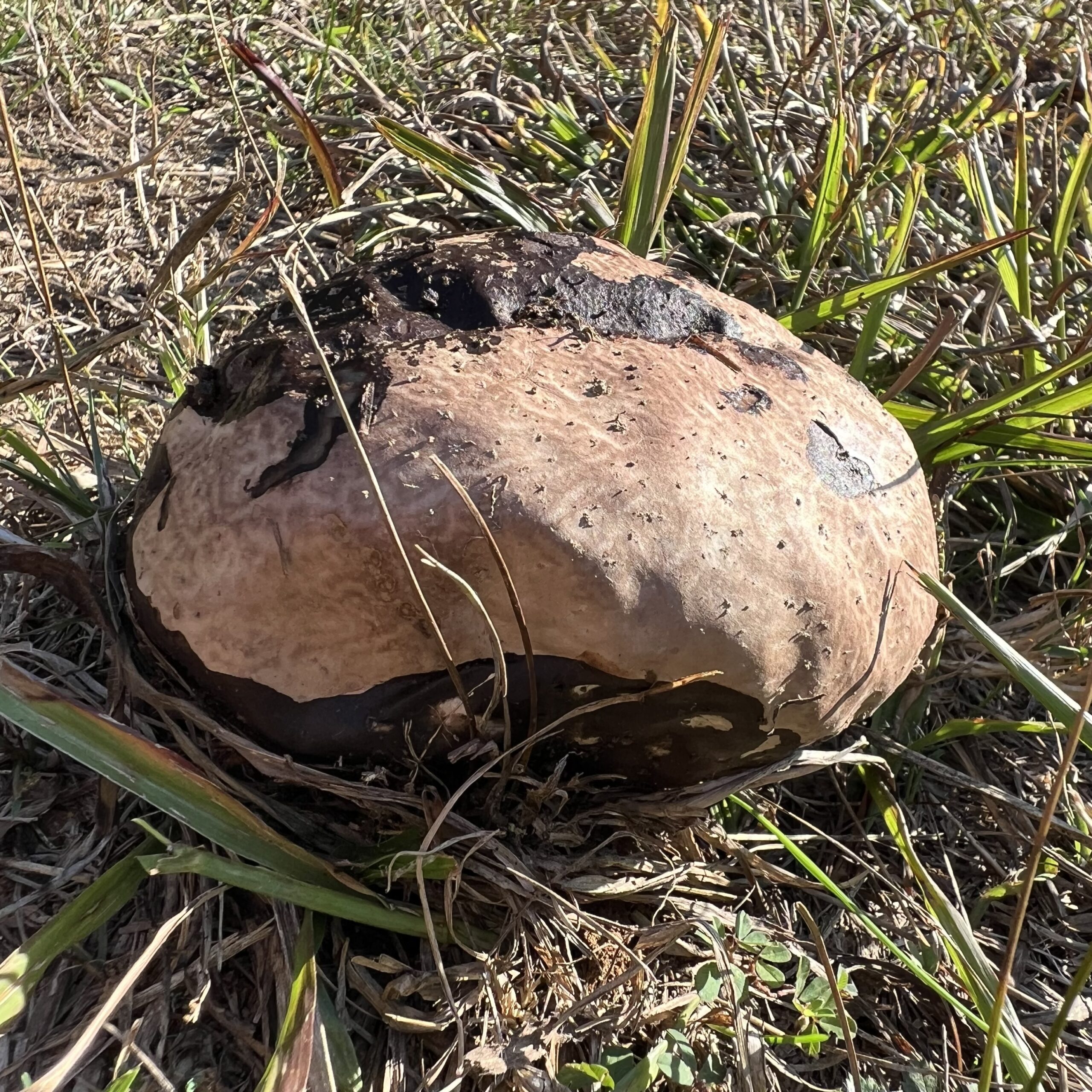
Purple-spored puffball (Calvatia cyathiformis)
I found two good sized puffball fungi in the north field in early October. The one pictured was a bit larger than a softball. Like many fungi, puffballs are important decomposers and obtain nutrients by breaking down decaying matter.
The puffballs broke down in about a week, converting their flesh into spores. Rain drops usually do the job of spore dispersal, but a booted foot works just as well, as you can see from the video. These fungi can contain billions of spores! Giant puffballs (Calvatia gigantea) can grow to the size of a large beach ball and can contain trillions of spores! I haven’t seen one in a few years, but they are always exciting to find.
Report: Week of Oct. 12, 2024
Hoary Bat (Lasiurus cinereus)
Ambassador bats from PA Bat Conservation and Rehabilitation attended Tyler’s Fall Fireside event on October 11. The hoary bat in the attached video is non-releasable due to a wing injury that resulted in the amputation of her wing. She will live out her life at the rehab center. Hoary bats migrate to warmer habitats in winter, and in summer, they stay hidden in the foliage of conifer trees. Their size, unusual coloration and sleeping posture mimic pinecones, providing excellent camouflage.
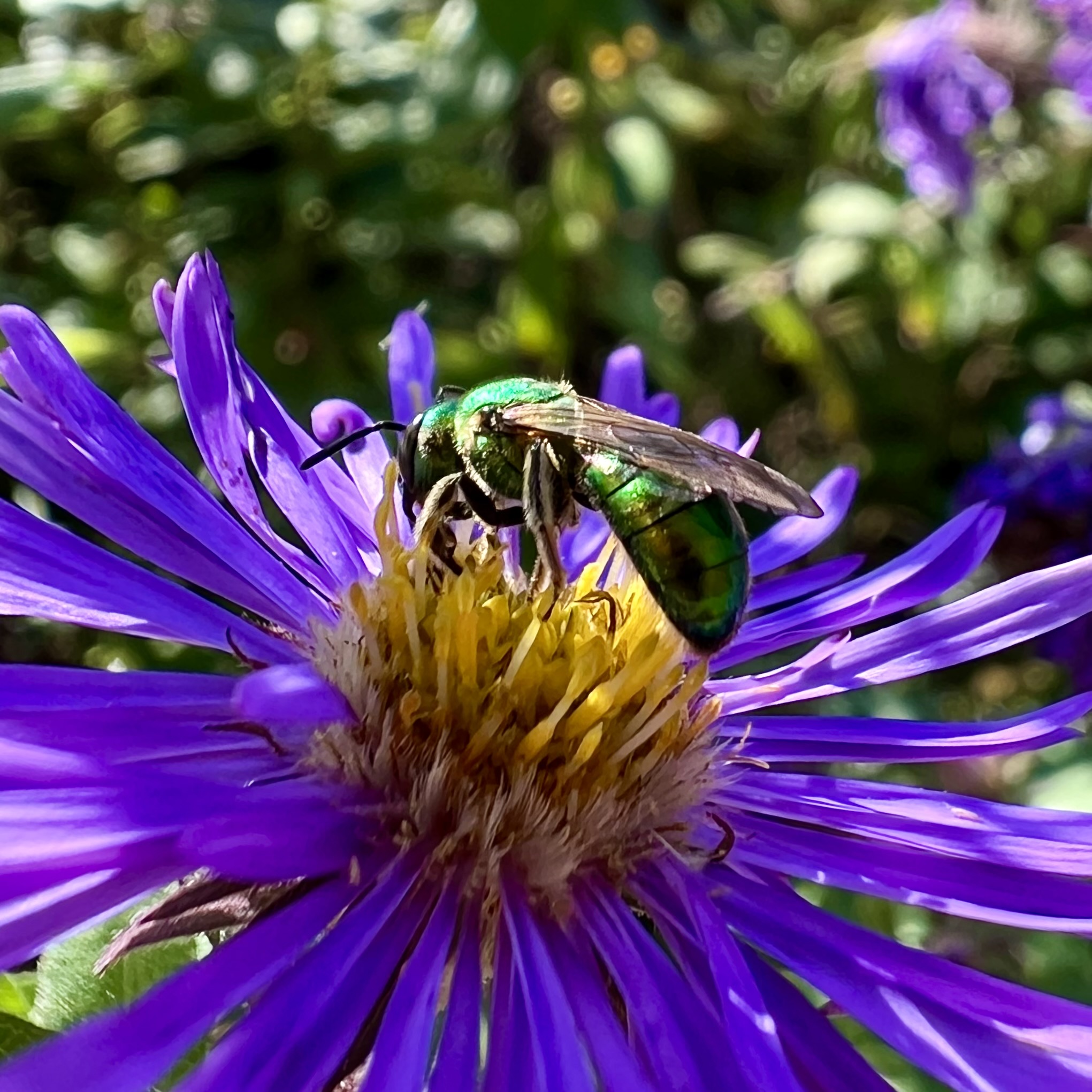
Pure Green Sweat Bee (Augochlora pura)
On sunny fall days, you can find these small bees on asters in the Pollinator Preserve and the north field.
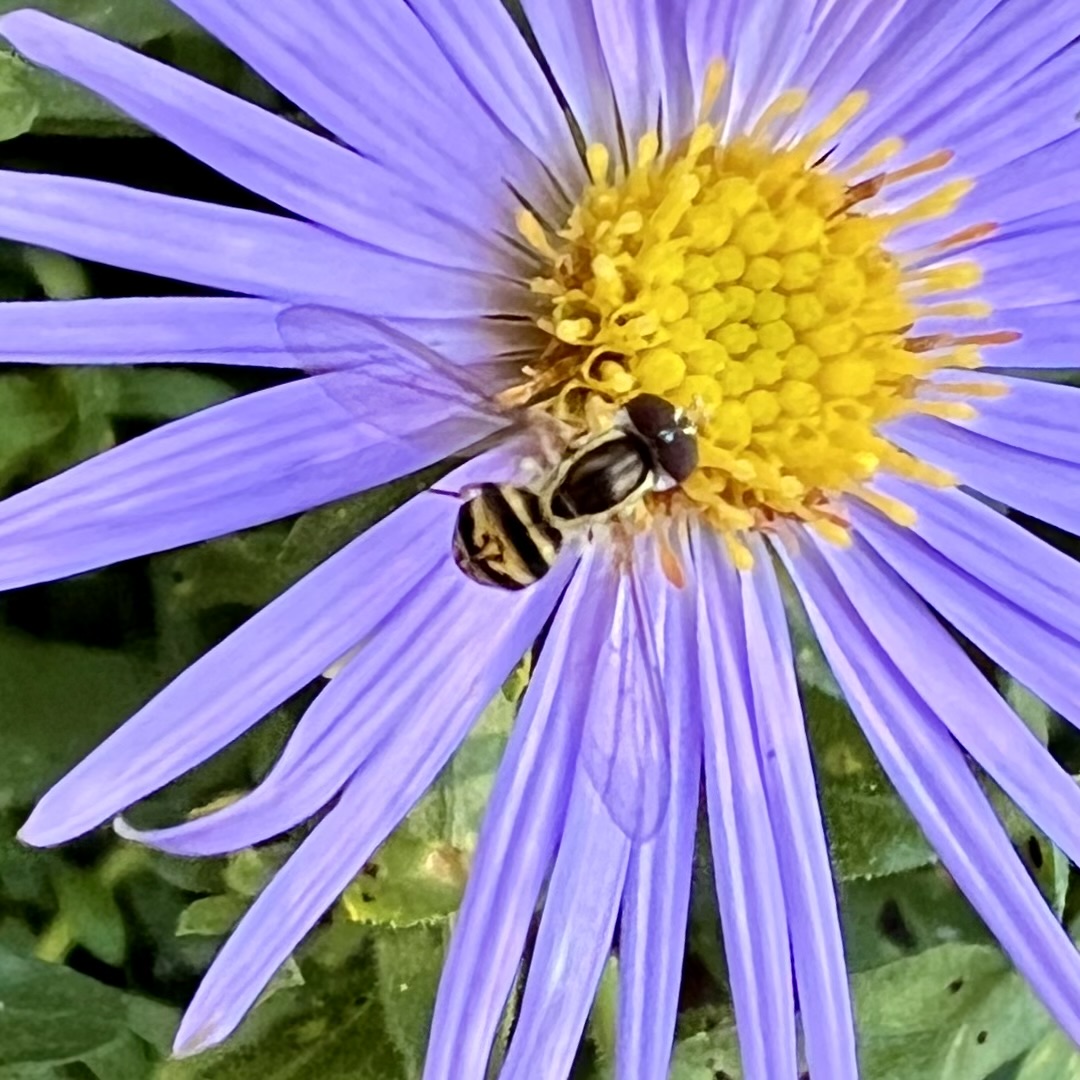
Eastern calligrapher fly (Toxomerus geminatus)
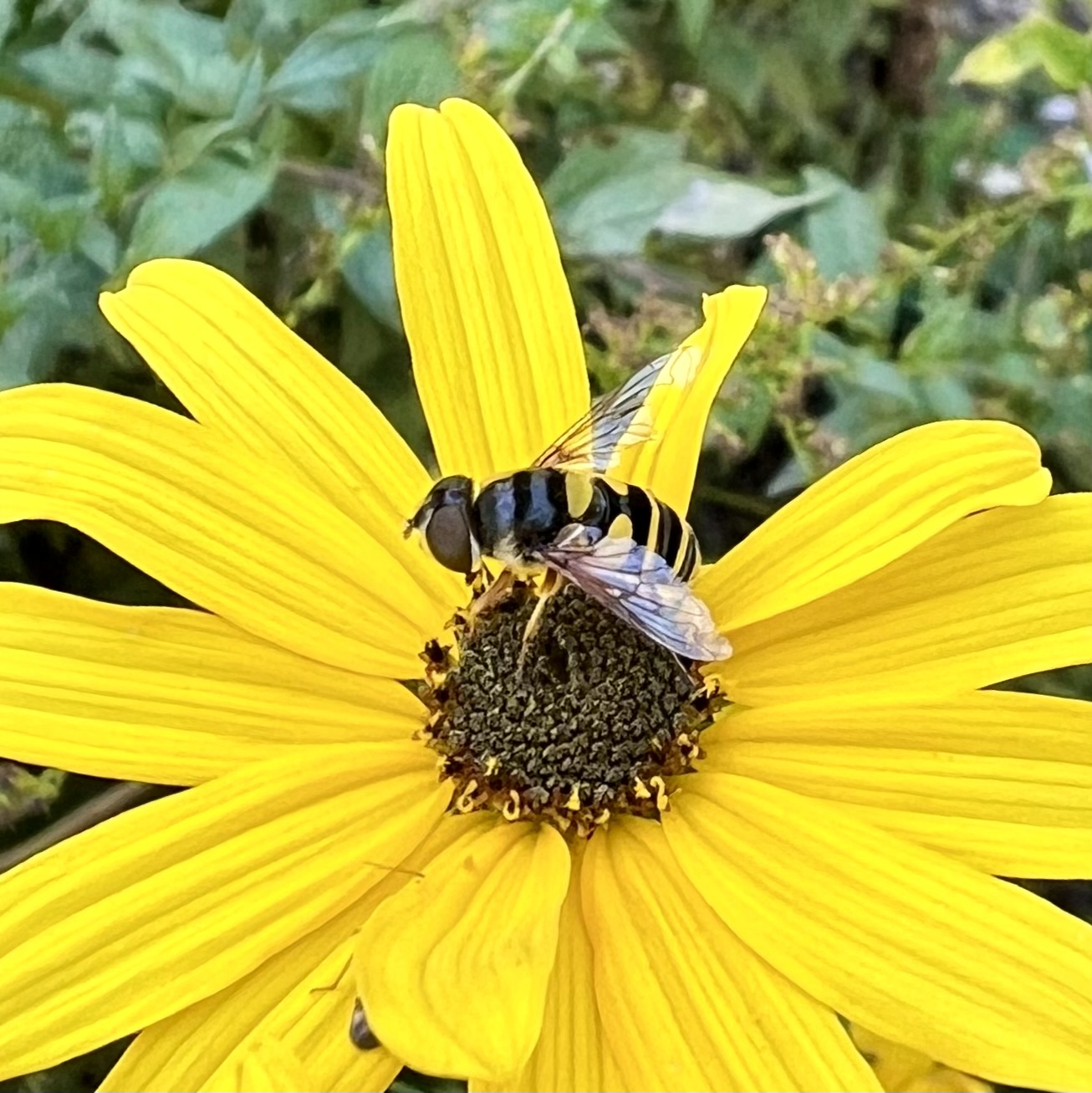
Transverse banded drone fly (Eristalis transversa)
Flies are all eyes. Some flies have evolved to resemble bees and wasps as a defense strategy, but a few traits give them away. Flies typically have very large eyes that often meet in the middle. Additionally, they hold their wings out to the sides when resting and feeding.
Report: Week of Oct. 5, 2024
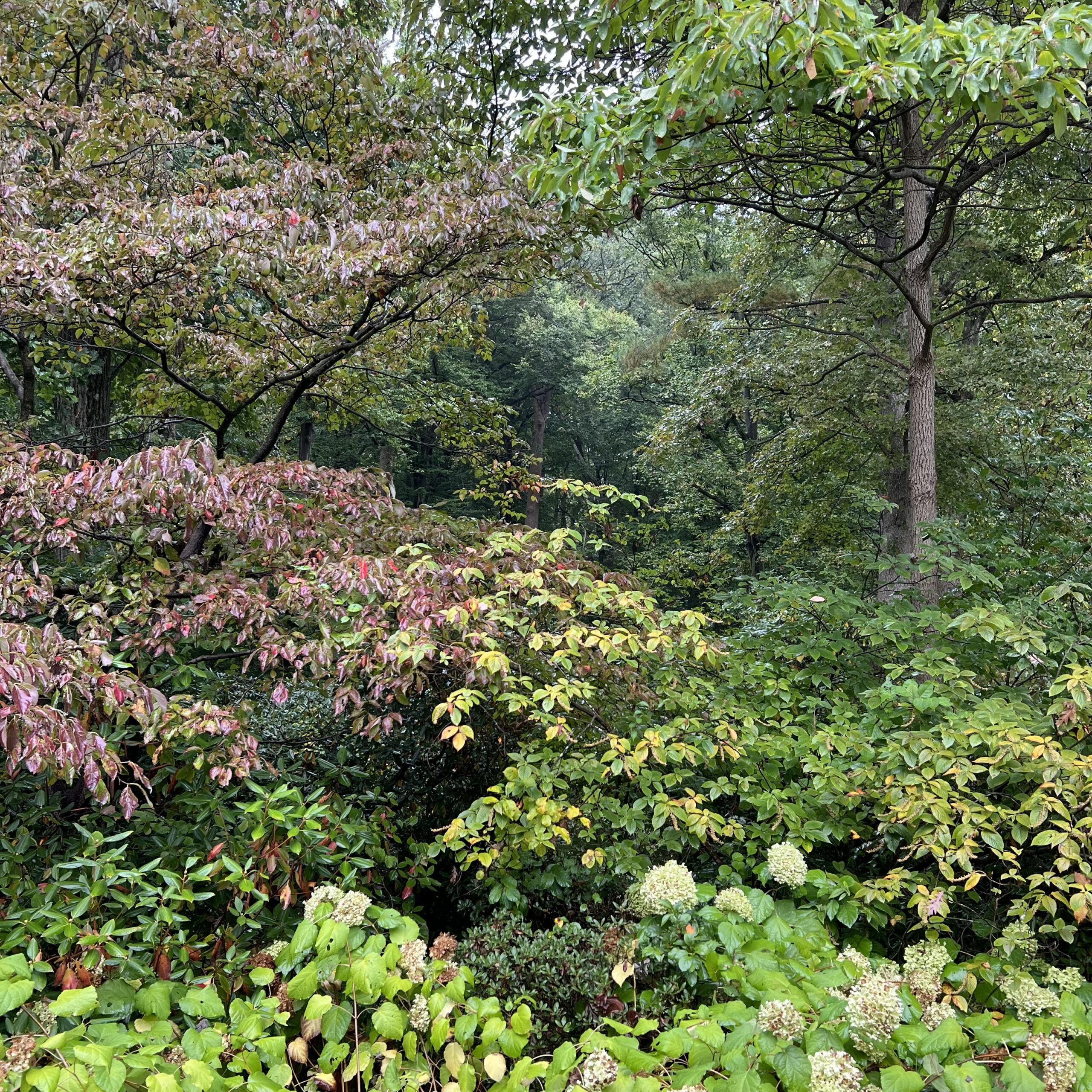
Native Woodland Walk in October
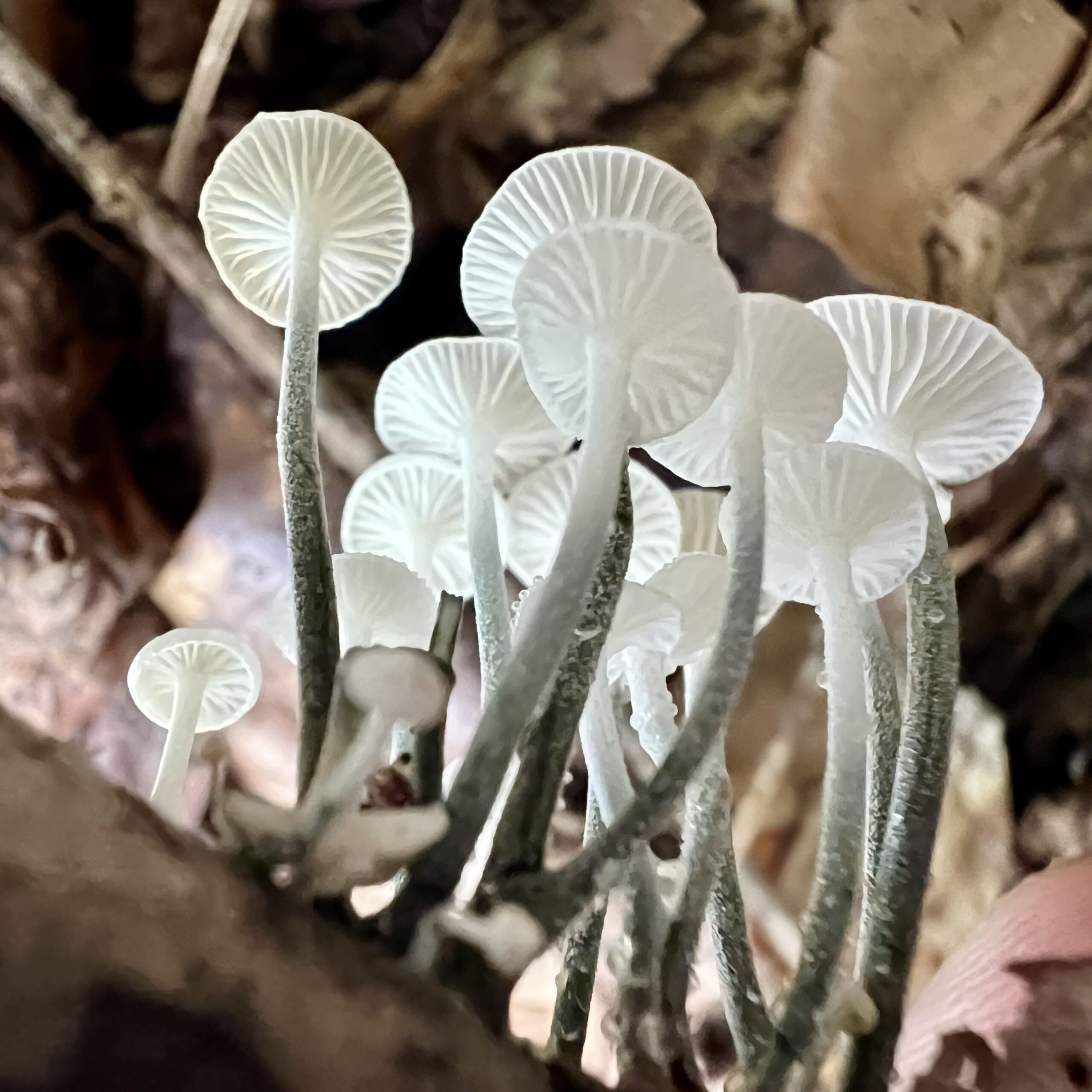
Black-stalked Marasmius (Tetrapyrgos nigripes)
Credit goes to Tyler Arboretum Volunteer Coordinator Lexi Fowler for spotting these tiny mushrooms just outside of Gate 1.
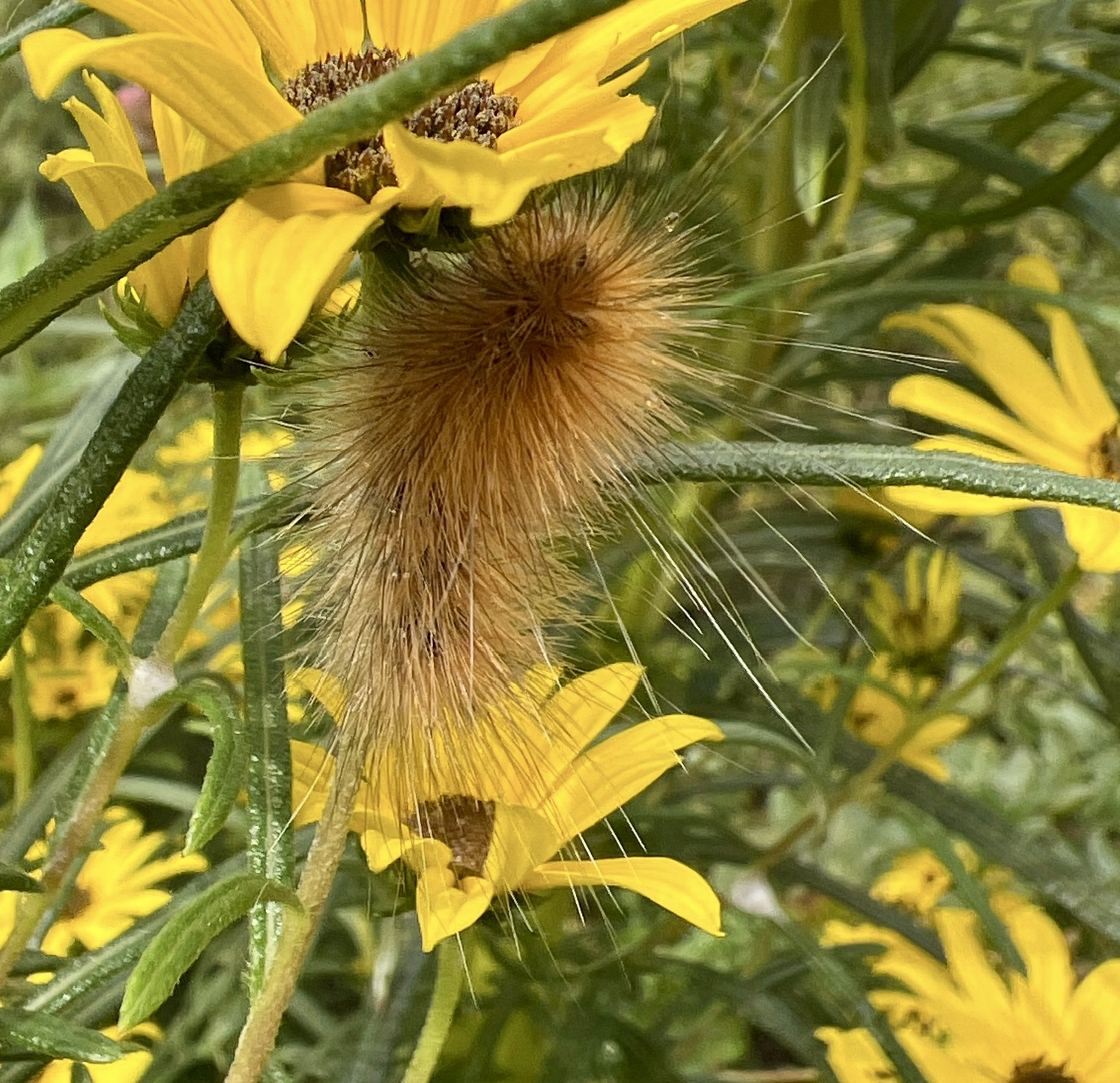
Best educated guess: Virginian Tiger Moth (Spilosoma virginica)
Some caterpillars defend themselves with special barbed hairs called urticating hairs. When touched, these hairs easily break off and can embed in the skin of a person or animal, causing irritation.
Bumblebee on Closed Bottle Gentian (Gentiana andrewsii)
You can find closed bottle gentian in the Pollinator Preserve in early October. Large bees will work hard to access the nectar and pollen rewards inside the flower. I observed this determined bumblebee doing just that several years ago.
Boogie Woogie Aphids, aka Beech Blight Aphids (Grylloprociphilus imbricator)
When threatened, boogie woogie aphids appear to throw a dance party! In fact, they are waving the hairs on their abdomens to deter predators. These aphids feed on plant sap and produce a sugary waste called honeydew, which eventually leads to the growth of sooty black mold. Surprisingly, neither the aphids nor the sooty mold are harmful to the tree.






